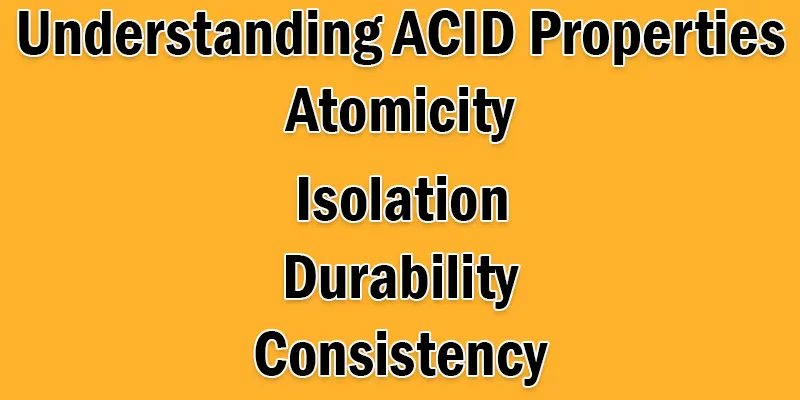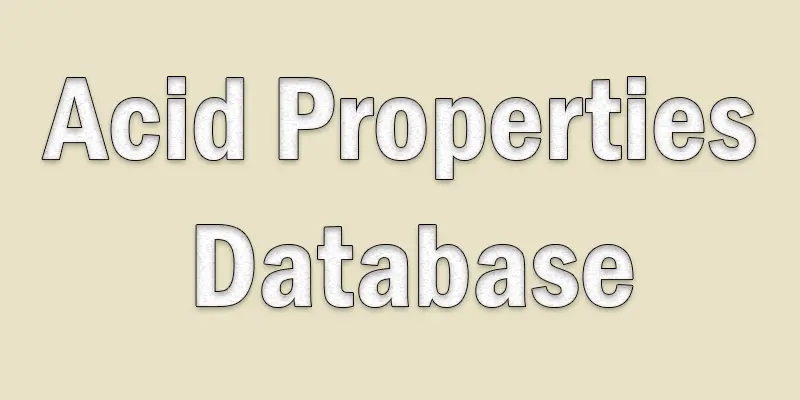ACID Properties in Databases – How They Keep Data Safe
Published: 18 Apr 2025
Acid Properties Database
Databases handle millions of transactions daily, and without ACID properties—Atomicity, Consistency, Isolation, and Durability—data could become inconsistent or lost. Have you ever wondered what keeps your bank transactions safe, even when a system crashes? Imagine transferring money, but the system fails—was the amount sent or lost? Thanks to ACID, transactions are either fully completed or rolled back. Picture scanning items at checkout when the power goes out—ACID ensures your payment is either processed or not recorded, preventing errors. Let’s explore how ACID properties keep databases reliable.
Understanding ACID Properties
Databases need to handle transactions reliably, ensuring that data remains accurate and consistent. This is where ACID properties come in. Four fundamental concepts that guarantee safe and error-free database transactions are represented by the acronyms ACID stands for Isolation, Durability, Consistency, and Atomicity.
- Atomicity
- Consistency
- Isolation
- Durability
Atomicity
When a database transaction is atomic, it’s all or nothing. If one component fails, the entire transaction is cancelled to prevent incomplete data. This ensures that databases are reliable and accurate.
Example
The debit from one bank account and the credit to another must occur simultaneously when money is being transferred between bank accounts. If the system collapses after the money is debited but before it is credited, atomicity ensures the transaction is rolled back, so no money is lost.
Consistency
A database’s accuracy and adherence to all regulations both before and after a transaction are guaranteed by consistency. It keeps the system dependable by preventing the saving of incorrect data. If a transaction violates any rule, it is not applied to the database.
Example
In a banking system, if an account must always have a positive balance, the database will reject any transaction that causes a negative balance, ensuring consistency.

Isolation
Isolation ensures that multiple transactions in a database do not affect each other. Even if many users perform actions at the same time, each transaction runs independently until it is completed. This prevents errors and keeps data accurate.
Example
Consider two individuals simultaneously reserving the final seat on a flight. Isolation prevents duplicate reservations by guaranteeing that only one booking is processed.
Durability
Even in the event of a system malfunction or power outage, durability guarantees that a completed transaction is retained in the database eternally. This indicates that after being saved, the data stays secure and unaltered.
Example
If you book a flight ticket and the system suddenly shuts down, durability ensures that your booking details are not lost and will still be there when the system restarts.
Real-Life Examples of ACID in Action
- Bank Transactions – Ensures money is deducted from one account and added to another without errors.
- Online Shopping – Confirms payment and updates stock levels only if both actions succeed.
- Flight Booking – Secures seat reservations and payment processing together.
- Hospital Records – Guarantees patient data updates are accurate and complete.
- ATM Withdrawals – Ensures cash is dispensed only if the account balance is updated.
Challenges and Limitations of ACID
While ACID properties ensure data accuracy and reliability, they come with some challenges. Performance can be slow because strict rules require more processing power. Scalability is limited since ACID databases struggle to handle large, distributed systems efficiently. Complex implementation makes database design harder, especially for high-traffic applications. Resource usage is high, as maintaining consistency needs more storage and computing power. Due to these limitations, many modern applications, like social media and big data platforms, prefer BASE databases for better speed and flexibility.

Conclusion About Database Acid Properties
ACID properties ensure that databases handle transactions safely and correctly. They help maintain accuracy, prevent errors, and keep data secure even during failures. While they may slow down performance, they are essential for systems that need reliability, like banking and online shopping. Understanding ACID properties will help you build stronger and more trustworthy databases!
FAQS Acid Database
ACID stands for Isolation, Durability, Consistency, and Atomicity. These characteristics guarantee the accuracy, completeness, and security of database transactions. They assist ensure data accuracy even amid failures.
Data ACID properties ensure that data remains accurate, reliable, and secure in databases. They help prevent corruption, incomplete transactions, or lost data. ACID is key for applications like banking, e-commerce, and financial systems.
Systems for managing relational databases (RDBMS) like MySQL, PostgreSQL, and Oracle follow the ACID guidelines. They store data in structured tables and use transactions to ensure accuracy. These databases are used for applications that need strong data integrity.
ACID properties protect data from errors, crashes, or failures. They make sure transactions happen completely and correctly. Without ACID, data could be lost, duplicated, or left in an incorrect state.
An ACID-compliant database complies with the Atomicity, Consistency, Isolation, and Durability requirements. This guarantees that all transactions are finished, data remains accurate, and errors—even in the event of a system crash—do not arise. Examples include MySQL, PostgreSQL, and Oracle.
MySQL is partially ACID-compliant. It supports ACID properties only when using the InnoDB storage engine, not MyISAM. To ensure full ACID compliance, you must enable transactions and use InnoDB.
Hadoop is not fully ACID-compliant because it is designed for big data processing, not transactional integrity. However, some tools in the Hadoop ecosystem, like HBase, provide partial ACID support. For strict ACID compliance, traditional relational databases are better.
MongoDB was not fully ACID-compliant in early versions, but newer versions (4.0+) support ACID transactions. It ensures multi-document transactions for better data consistency. However, NoSQL databases like MongoDB prioritize scalability over strict ACID guarantees.
Google BigQuery is not fully ACID-compliant because it is a data warehouse, not a transactional database. It supports eventual consistency rather than strict ACID transactions. It is designed for fast analytical queries rather than real-time transaction processing.

- Be Respectful
- Stay Relevant
- Stay Positive
- True Feedback
- Encourage Discussion
- Avoid Spamming
- No Fake News
- Don't Copy-Paste
- No Personal Attacks

- Be Respectful
- Stay Relevant
- Stay Positive
- True Feedback
- Encourage Discussion
- Avoid Spamming
- No Fake News
- Don't Copy-Paste
- No Personal Attacks





